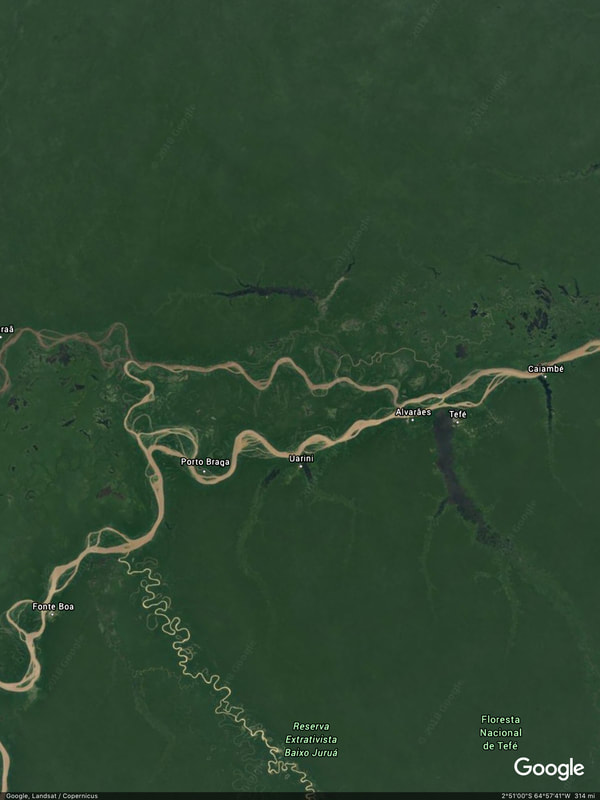|
The design process for All the Rivers in the World, Tacoma, was based on an open interaction with students, faculty, and community members at the University of Washington-Tacoma. In “river gathering” workshops held on campus, people were invited to participate in this public art piece with the following prompt:
Think about rivers: the rivers you know, remember, and are connected to. Where has the water flowed in the places of your childhood and your current home? What is the name of your river? Write it in the language most meaningful to you. After drawing and writing the name of their river, they were invited to make objects using clay mixed with sediment from the Puyallup River. This tactile activity was meant to encourage a peaceful, meditative moment and sense of connection to the local landscape. The collected names of rivers were brought into the design for the permanent artwork along the Prairie Line Trail on campus. Participants were invited to write the name in the language most meaningful to them. For this reason, some names are represented in English, and many are written in the languages spoken where the rivers are located. The choice of language and alphabet was made by the person who contributed the river name. Vaughn researched every river name that was given to the project, locating it on maps and checking spelling with online resources and in-person checks with native language speakers. Where multiple possible spellings existed for a river, Vaughn used the one that the participant contributed. Early conversations about this design process and the resulting permanent artwork addressed the way in which the artwork could center and bring focus to the Indigenous history and relationship to the land. Specifically, Tribal Liaison, Indigenous Studies faculty and art committee member Danica Miller collaborated with Vaughn on determining the appropriate way to include the Puyallup River and the Lushootseed language. Danica suggested the placement of the Lushootseed words at the ‘mouth’ of the river and the ‘headwaters,’ which references the full circle aspect of water cycles. Danica provided the exact words for use from her Lushootseed dictionary, and then presented the design concept to the Puyallup Tribal Council for approval. The typographers who collaborated on the design of the work used a specially designed Lushootseed typeface for these words. Upon the advice of Danica Miller, the Lushootseed words were not capitalized in keeping with the proper way of writing place names in this language. In addition to centering the Indigenous words and presence, the interactive process for the artwork was intended to connect students more deeply to the place where they live and study. Vaughn and Danica collaborated in presenting a “river gathering” workshop in Danica’s class. Students were invited to participate in giving a river name to the project, and reflect on the meaning of indigeneity. In many other “river gathering” workshops on campus and in classrooms, students reflected on what it means to have a relationship to places. The river names are placed roughly geographically on the sculptural form, with the names that are in closer geographical proximity to Tacoma being near the ‘mouth’ of the sculptural river and the river names from further away extending upstream. The exception is the ‘headwaters,’ which includes the Lushootseed for “mountain that is always snowy” and the outline of glacial forms from Mt. Rainier/Tahoma. The collected names were brought together in the sculptural form to create a feeling of flow. The design of the sculptural form itself is based on the shapes of real rivers, reflecting actual shapes of some of the rivers named in the piece. This hybrid river combines many river forms and shapes, suggesting a collage of watery places around the earth.
2 Comments
Thanks to the fantastic facilities staff at UW-T for dedicated artwork installation work, and to Tim Bell!
Many students, faculty and staff at UWT have participated in the All the Rivers in the World, Tacoma, river gathering workshops. River names gifted to the project are included in the permament artwork on campus. Here is a list in progress of river names. In partnership with Danica Miller, Puyallup Tribal Liaison, and with approval of the Tribal Council, we have worked to place in central positions the Lushootseed words for the river and the mountain- in the final form these will be written in Lushootseed text.
Lushootseed word for Puyallup Puyallup Chambers Greenwater Nisqually Duwamish Green Carbon Cayada Clarks White Clover Snoqualmie Kelsey Issaquah Mashel Sammamish Jim Kachess Skokomish Deschutes Whatcom Cowlitz Dungeness Chehalis Cedar Tilton Columbia Olympic Elk Willamette Yakima Wenatchee Cooke Snake Lewis Capilano Napa Klutina Colorado Rio Grande Río Bravo Arizona Missouri Amacuzac Big Piney Tallapoosa Maumee Detroit Potomac Shenandoah Mississippi Pemigewasset Navesink Charles Lafayette Rainbow Page Usumascinta Amazon St. Lawrence Amber Fun Segura Neckar Danube Rhein الفرات al-Furāt دجلة Dijlah Nairobi እደላ Shebelle النيل Selem Arghandab Langtang Kita 한 강 Han 녹색 Green Pampanga Pilar Panguil 四万十川 Shimanto 荒川 Arakawa แม่น้ำโขง Mekong Sông Cửu Long Bồ Đề Saigon Yu Cheng Yangtze 珠 江河 Zhujiang Pearl 淡水河 Tamsui Bride’s Pool Keelung Indus Beas Lushootseed word for snowy mountain In these ongoing workshops, members of the UWT community remember the rivers they have known, write a river's name for the project, and then make something using clay mixed with Puyallup River sediment. The river names will become part of the permanent public art.
The waters that flow in the Puyallup River begin on the slopes of the mountains, particularly Tahoma- Mt. Rainier. Eventually these streams come together and flow to the Salish Sea. Here are some field recordings of the sounds of some of this water.
Mountain Water Sounds |
Author
Vaughn Bell is an artist who also teaches at the University of Washington-Tacoma. Her other projects are at www.vaughnbell.net Archives
August 2019
Categories |
























 RSS Feed
RSS Feed
